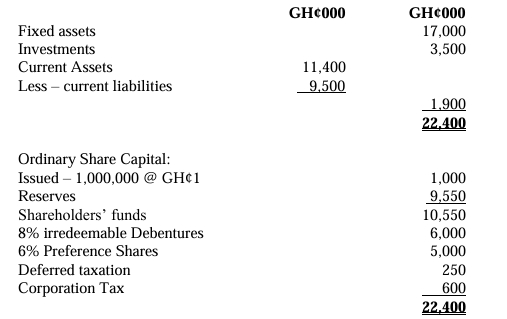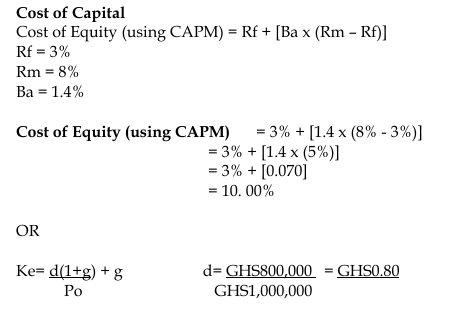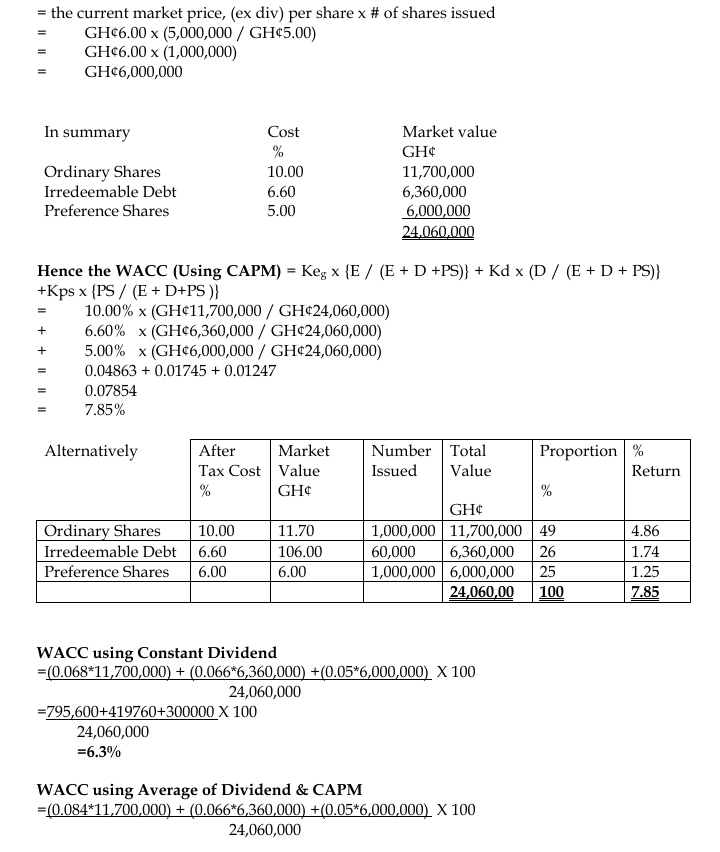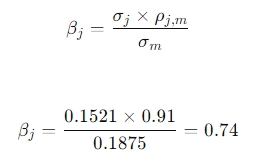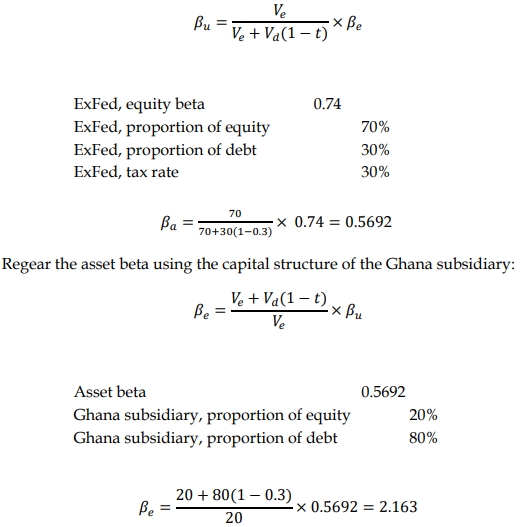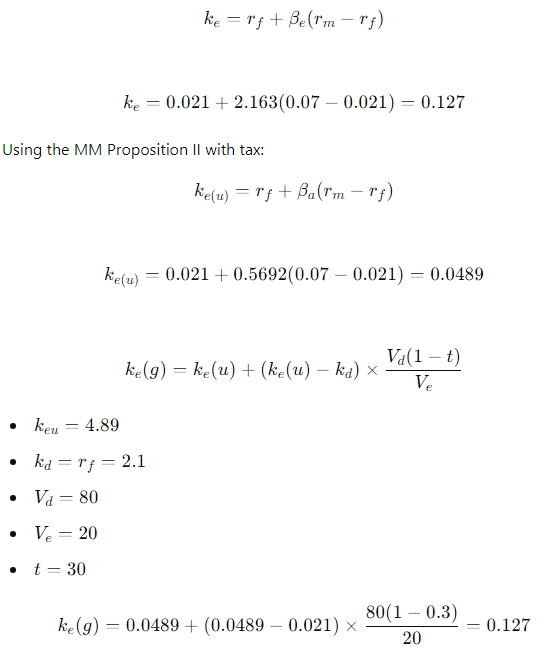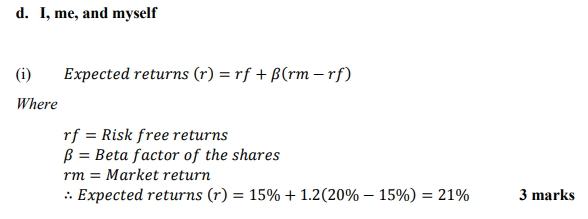- 8 Marks
Question
a) The directors of Sunland Company, a company which has 75% of its operations in the retail
sector and 25% in manufacturing, are trying to derive the firm’s cost of equity. However, since
the company is not listed, it has been difficult to determine an appropriate beta factor. The
following information was researched:
- Retail industry – quoted retailers have an average equity beta of 1.20, and an average
gearing ratio of 20:80 (debt: equity). - Manufacturing industry – quoted manufacturers have an average equity beta of 1.45 and
an average gearing ratio of 45:55 (debt: equity). - The risk free rate is 3% and the equity risk premium is 6%.
- Tax on corporate profits is 30%.
- Sunland Co has gearing ratio of 50% debt and 50% equity by market values. Assume that
the risk on corporate debt is negligible.
Required:
Calculate the cost of equity of Sunland Company using the Capital Asset Pricing Model.
Answer
Step 1: Calculate asset beta for the retail and manufacturing industries
- Retail industry asset beta:
Asset beta = Equity beta × [Equity / (Equity + Debt × (1 – Tax rate))]
= 1.20 × [80 / (80 + 20 × (1 – 0.30))]
= 1.20 × [80 / (80 + 14)]
= 1.20 × 0.8511
= 1.0213 - Manufacturing industry asset beta:
Asset beta = 1.45 × [55 / (55 + 45 × (1 – 0.30))]
= 1.45 × [55 / (55 + 31.5)]
= 1.45 × 0.6356
= 0.9216
Step 2: Calculate weighted asset beta for Sunland Co
Weighted asset beta = (0.75 × Retail asset beta) + (0.25 × Manufacturing asset beta)
= (0.75 × 1.0213) + (0.25 × 0.9216)
= 0.7660 + 0.2304
= 0.9964
Step 3: Re-gear the asset beta to calculate Sunland Co’s equity beta
Equity beta = Asset beta × [1 + (Debt / Equity) × (1 – Tax rate)]
= 0.9964 × [1 + (50 / 50) × (1 – 0.30)]
= 0.9964 × [1 + 1 × 0.70]
= 0.9964 × 1.70
= 1.694
Step 4: Calculate the cost of equity using CAPM
Cost of equity = Risk-free rate + Equity beta × (Market risk premium)
= 3% + 1.694 × 6%
= 3% + 10.164%
= 13.164%
Thus, the cost of equity for Sunland Co is 13.16%.
- Tags: Beta calculation, CAPM, Corporate finance, Cost of Equity, Gearing
- Level: Level 3
- Topic: Sources of finance and cost of capital
- Series: NOV 2016
- Uploader: Joseph

